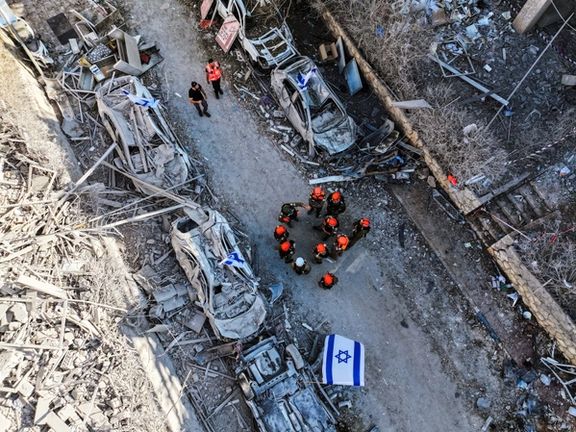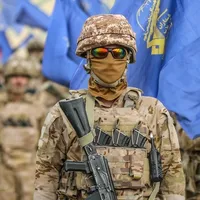Attention is centered on the Minister of Information and Communications Technology (ICT) nominee as a possible beacon of hope amid Iran's ever increasing internet crackdowns in recent years.
But who is Sattar Hashemi?
Hashemi, 48, is an associate professor in the Electrical and Computer Engineering School at Shiraz University but previously served as the Deputy for Technology and Innovation under Mohammad-Javad Azari-Jahromi, from 2019 to 2021.
What exactly did Pezeshkian promise, and why?
During his presidential campaign, Masoud Pezeshkian repeatedly emphasized his commitment to ending internet bans, declaring: "I will make every effort to reform the ineffective filtering system...We must free the internet." He promised, "I will stand against filtering."
There was a certain appeal to this for some voters because over the past two decades, Iran has enacted widespread censorship measures, blocking access to tens of thousands of websites.
With the advent of social media, platforms such as Facebook, Twitter, and YouTube have also faced stringent restrictions. Traditional media, literature, and films are similarly subject to heavy censorship, scrutinized for their adherence to Islamic principles and political content.
Iranians often resort to VPNs to gain unrestricted access to the Internet to circumvent these restrictions and bypass filters. In more open societies, VPNs are primarily used to protect user anonymity.
Millions of Iranians have been left poverty-stricken due to internet crackdowns all but obliterating their small businesses which rely on social media, especially affecting women in rural areas.
But the task is so daunting that even within Ebrahim Raisi's hardline administration, there are acknowledgments of presidential power's limitations, particularly concerning internet censorship in Iran.
The outgoing Minister of ICT, Issa Zarepour, conceded that the government lacks the authority to unilaterally lift internet restrictions imposed by the country's small, elite circle of decision-makers around the Supreme Leader. He even criticized presidential candidates who had pledged to do so.
"Those advocating for the removal of internet filtering should recognize that such decisions are often determined in meetings where government consensus does not necessarily align with the majority opinion," Zarepour remarked, alluding to the significant influence wielded by security and intelligence agencies in controlling the flow of information.
Will Hashemi be able to fulfill the promises made by Pezeshkian during his campaign?
Unlike Pezeshkian, Hashemi has not directly addressed the removal of internet filtering in Iran nor made any promises to do so. His proposed action plan simply includes measures to “reform its current implementation.”
However, on Tuesday, an MP quoted Hashemi, stating that he would act according to the system's general policies regarding internet filtering in Iran. In other words, he is unlikely to undertake the necessary efforts to explore potential changes to lift internet restrictions.
During his tenure in the ICT, Hashemi championed what appeared to be a straightforward initiative: the production of Iranian-made smartphones, touted as a means to reduce dependency on imports, create jobs, and bolster Iran's information and communications technology industry.
The Islamic Republic has invested lavishly in this endeavor for years, taking cues from China's model. This has included offering production incentives to over 100 companies last year and allocating a hefty budget for manufacturers, all accompanied by grandiose promises.
Yet, developing a domestic smartphone industry is intertwined with the Islamic Republic's broader agenda of advancing its long-term "national internet" project. The goal is to produce phones equipped with a native operating system designed to limit VPN installation while enhancing surveillance capabilities.
The industry so far has delivered little tangible benefit for the Iranian populace. Instead, it has led to squandering the nation’s budget, funneling significant financial resources into the hands of crony companies and trusted affiliates. Meanwhile, ordinary citizens bear the brunt of daily costs just to access the internet.
Alireza Kolahi Samadi, Chairman of the Industry Commission of the Chamber of Commerce, recently said of plans to have a home-grown mobile phone industry: "It’s the joke of the century that 11 licenses have been granted for mobile [phone] production. One of these units was given 360 million euros in foreign currency."
He further noted that many producers vanish after receiving financial assistance—funds ostensibly intended for creating a national mobile phone with local infrastructure, which has so far resulted in a colossal failure.
Mohammad Reza Faraji, head of the Tehran Computer Technology Union, corroborated this by stating that, as of now, no Iranian-made mobile phones are available on the market.
A time of discontent among reformists
The debate is especially noticeable in a period marked by intense dissatisfaction among pro-reform factions. The discontent reached such a peak that even Mohammad Javad Zarif, instrumental in securing President Masoud Pezeshkian's election, resigned shortly after the new president presented his cabinet list to parliament on Sunday.
Zarif expressed his regret over his inability to implement the committees' expert recommendations to identify the most suitable candidates and his failure to fulfill promises of including women, youth, and ethnic groups in the cabinet.
He disclosed that among the 19 ministers introduced, only three were the primary choices recommended by the steering committee responsible for candidate selection.
With an average age of 60, the cabinet starkly contrasts with Pezeshkian’s earlier pledge that 60% of the ministers would be under 50.
The nation watches closely to see if this youthful appointee will break with tradition or fall in line with the status quo, especially given the daunting challenge of lifting internet restrictions—a task so formidable that even hardliners have admitted it may be impossible.














